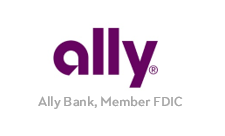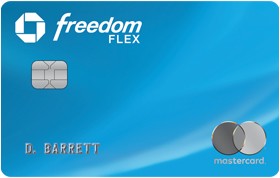
With the holiday season less than 100 days away, it's already time to start preparing your shopping list. While 2020 has certainly not met anyone's expectations, there are traditions we all want to hold onto and make special for loved ones — even if your budget has changed considerably this year.
A little bit of planning can go a long way when preparing for the holiday season, a time that often results in people spending beyond their means. Last year, Americans racked up more than $1,000 in holiday debt, according to MagnifyMoney's annual post-holiday debt survey. Of the respondents, 78% reported that they wouldn't be able to pay off their credit cards by January, and 15% said they could only make minimum payments.
No matter how ready we think we are for the holiday season, December always seems to arrive at lightning speed. This year, Americans made record gains in paying off credit card debt as a result of stay-at-home orders and the recession. And since the holidays might look a little bit different this year, with smaller gatherings and more time at home, it might be the perfect time to put a new plan in place with the goal of avoiding a big credit card balance come January 1.
Below, CNBC Select offers 5 steps to help you prepare financially for the holidays.
1. Make a list
Start with a list of everyone you usually buy gifts for, from your mother-in-law to your cousin's kids. If you don't know what you want to buy them yet, you can simply assign them a price range. At this stage, it's best to overestimate a little to account for tax and shipping fees.
After you have your list of gift recipients, begin to think about other costs associated with the holidays. Will you be sending Christmas cards this year? Are you hosting Thanksgiving? Even if you're planning a smaller get together, it's important to consider the costs early.
This is also a good time to start planning your holiday travel. While many people might choose to stay closer to home because of Covid-19, you could find yourself taking more day trips, or even driving long distances by car. Include any estimated travel costs in your list of holiday expenses.
2. Build a budget and start saving
After you make a list of your upcoming expenses, look at your current budget so you can make a plan for how to pay for everything. Now is a good time to start stashing extra cash so you can be ready for the additional spending, either in your current savings account or in a new account designated just for the holidays.
The Ally Online Savings Account is a good choice for when you want to create separate savings "buckets" all within one savings account. Account holders can organize their saving goals by creating up to 10 different funds within the same savings account. For instance, you could create a bucket for holiday gifts and another for upcoming travel.
Ally Bank Online Savings Account

On Ally Bank's secure site
-
Annual Percentage Yield (APY)
-
Minimum balance
-
Monthly fee
-
Maximum transactions
Up to 6 free withdrawals or transfers per statement cycle
-
Excessive transactions fee
$10 per transaction
-
Overdraft fees
-
Offer checking account?
-
Offer ATM card?
Yes, if have an Ally checking account
Pros
- Strong annual percentage yield on all balance tiers
- No minimum balance
- No monthly fees
- Up to 6 free withdrawals or transfers per statement cycle
- Option to add a checking account
- ATM access if you have a checking account
Cons
- $10 fee per transaction if you make more than 6 in a statement cycle
- $25 overdraft fee
"Start setting aside a small amount from each paycheck now for holiday spending," Texas-based certified financial planner, Brandon Renfro tells CNBC Select. "Spreading the savings out over several months will make it easier to absorb into your budget, and limiting yourself to spending the balance will keep you from going into debt when the holidays come."
3. Use coupons
While you can certainly still find paper coupons in your mailbox and newspaper inserts, the definition of coupon has changed a bit in recent years. There's an easier, faster way to search for discounts that doesn't require scissors: using a browser extension for online shopping.
One of the most popular browser coupon extensions is Honey. When you're checking out at nearly any online store, Honey automatically scans the web for coupon and promo codes and finds you the best savings before you click "Buy." The service is free, and you can even earn Honey rewards in the form of cash back on purchases over time.
Other services include Rakuten, which is like Honey but features rotating cash-back offers; Pricescout, which comparison shops to find you the best price; Gumdrop by Goodshop which helps you locate deals and donates a portion of eligible purchases to a school or nonprofit; and Coupon Cabin, which gives you price-saving tips based on your Google searches. (These extensions are compatible with Google Chrome.)
4. Get a 0% APR card with rewards
If cash is tight right now and you want to pay off your holiday purchases over the course of 12 months or more, consider applying for a card with introductory 0% APR. You need to have good to excellent credit to qualify for a no-interest credit card. Using a card with introductory 0% APR gives you a temporary period of time to pay off your bigger holiday purchases without incurring any interest fees. Usually, the no-interest period lasts 12 to 18 months (with a few exceptions), after which you'll start paying normal APR on your balance. You still have to pay the minimum during the intro period.
Right now, one of the best credit cards with 0% APR offer is the Chase Freedom Flex℠. It offers a competitive cash-back program in addition to its special financing that can help you earn additional money on what you spend. The cash-back calendar changes every quarter, but from October through December cardholders can earn 5% cash back on up to $1,500 in Walmart and Pay Pal purchases. (Learn more about how Chase classifies bonus category purchases.)
On top of its cash-back rewards, the Chase Freedom Flex comes with a current welcome bonus that's especially helpful for holiday shopping: Earn a $200 bonus after you spend $500 on purchases in the first 3 months from account opening, plus 5% cash back on grocery store purchases (excluding Target and Walmart) on up to $12,000 spent in the first year. If you plan on hosting a holiday gathering, this might be the card to consider.
Chase Freedom Flex℠

On Chase's secure site
-
Rewards
5% cash back on grocery store purchases (not including Target® or Walmart® purchases) on up to $12,000 spent in the first year, 5% cash back on up to $1,500 in combined purchases in bonus categories each quarter you activate (then 1%), 5% cash back on travel booked through the Chase Ultimate Rewards® portal, 3% cash back on dining and at drug stores, 1% cash back on all other purchases
-
Welcome bonus
$200 cash back after you spend $500 on purchases in your first 3 months from account opening
-
Annual fee
-
Intro APR
0% for the first 15 months on purchases
-
Regular APR
14.99% to 23.74% variable
-
Balance transfer fee
Either $5 or 5% of the amount of each transfer, whichever is greater
-
Foreign transaction fee
-
Credit needed
Excellent/Good
Pros
- No annual fee
- Generous welcome bonus
- Opportunity to earn up to 5% cash back in select categories upon activation
- Rewards can be transferred to a Chase Ultimate Rewards card
- Long intro 0% APR period for purchases
Cons
- Bonus categories must be activated each quarter
- 3% fee charged on foreign transactions
- Estimated rewards earned after 1 year: $814
- Estimated rewards earned after 5 years: $2,647
Rewards totals incorporate the cash back earned from the welcome bonus
If your credit score is hovering between fair and good, but you want to apply for a 0% APR card before December, consider signing up for Experian Boost. The service is completely free and allows you to get credit for paying some utility and telecommunication bills on time (think cell phone bill, Netflix and/or internet). On average, users see a 13-point increase in their FICO Score, making them more competitive for rewards cards with premium perks.
5. Sign up for credit monitoring
One of the downsides of holiday shopping is that it deviates from our normal behavior and makes it easier for fraudsters to get personal information. Since most of us are doing more online shopping than normal, a large purchase might go undetected. And since we're all so busy, we might not check our credit card statements as closely as we should.
To put your mind at ease, sign up for a credit monitoring service and set up alerts on your credit cards. While credit monitoring services cannot prevent fraud, they will alert you as soon as a red flag shows up on your account.
CNBC Select reviewed the top free and paid credit monitoring services, and IdentityForce® UltraSecure and UltraSecure+Credit ranked as the best paid services. They offer the most extensive security features, which monitor your information on more than just shopping sites. This includes the dark web, court records and social media (where a lot of phishing and scam posting happens). If something looks off, you'll receive alerts for potential fraud on your bank, credit card and investment accounts, as well as the use of your medical ID, social security number and address.
IdentityForce® UltraSecure and UltraSecure+Credit

On Identity Force's secure site
-
Cost
2 months free on all annual plans UltraSecure: $8.99/mo, $89.90/yr UltraSecure+Credit: $19.99/mo, $199.90/yr
-
Credit bureaus monitored
Experian, Equifax and TransUnion
-
Credit scoring model used
VantageScore
-
Dark web scan
-
Identity insurance
Yes, up to $1 million
See our methodology, terms apply. To learn more about IdentityForce®, visit their website or call 855-979-1118.
If you want to start with a free credit monitoring service, CreditWise® from Capital One is a good choice that doesn't require you to enter a credit card number to sign up. It's open to anyone, whether or not you are a Capital One account holder. When you sign up, you'll receive an updated VantageScore credit score from TransUnion every week along with credit report updates from TransUnion and Experian in real time. CreditWise also offers dark web scanning and social security number tracking.
CreditWise® from Capital One

Information about CreditWise has been collected independently by CNBC and has not been reviewed or provided by the company prior to publication.
-
Cost
-
Credit bureaus monitored
TransUnion and Experian
-
Credit scoring model used
VantageScore
-
Dark web scan
-
Identity insurance
To learn more about IdentityForce®, visit their website or call 855-979-1118.
Editorial Note: Opinions, analyses, reviews or recommendations expressed in this article are those of the CNBC Select editorial staff’s alone, and have not been reviewed, approved or otherwise endorsed by any third party.
The Link LonkSeptember 23, 2020 at 04:25AM
https://ift.tt/3hTq8bK
How to Get a Head Start on Holiday Saving - CNBC
https://ift.tt/2QoXNjh
Holiday

No comments:
Post a Comment